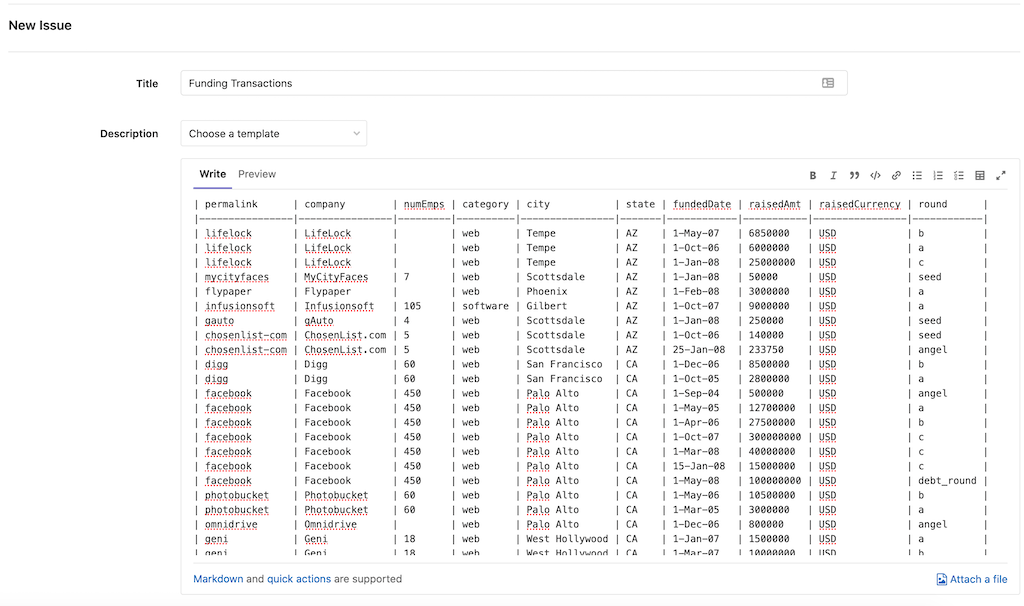🍿 3 min. read
GitHub recently released a feature that allows users to create a profile-level README to display prominently on their GitHub profile. This article walksthrough how to access this new feature. I'll also be sharing some fun GitHub profiles I've seen so far. I'd love it if you shared yours with me on Twitter @indigitalcolor.
A Prism syntax highlighter theme based on Github's style. I have a README.md file for my project underscore-cli, a pretty sweet tool for hacking JSON and JS on the command-line, and I want to document the -color flag. Currently, the ONLY way to do this is with a screenshot (which can be stored in the project repo): But screenshots aren't text, preventing readers from copy/pasting the command in the screenshot.
The above GIF shows what my README looks like at the time of this writing. You may notice I was recently selected to be GitHub star!
Table of Contents
Why READMEs?
The GitHub profile-level README feature allows more content than the profile bio, supports markdown which means you can play around with the content more visually (Did someone say GIFs!?) and the README is significantally more visible as it is placed above pinned repositories and takes up as much space above the fold of the webpage as you like.

A solid README is a core-component of well-documented software and often encourages collaboration by sharing helpful context with contributors. In my opinion, a profile-level README seems like a great extension of a convention a lot of GitHub users are already familiar with. If you're looking to make project-level READMEs more awesome and helpful check out matiassingers/awesome-readme for resources and examples of compelling READMEs.
Readme Syntax Github Example
How do I create a profile README?
The profile README is created by creating a new repository that’s the same name as your username. For example, my GitHub username is m0nica so I created a new repository with the name m0nica. Note: at the time of this writing, in order to access the profile README feature, the letter-casing must match your GitHub username.
Already have a repo-named username/username?
If you are interested in setting up a profile-level README then you can rename the repositoryor repurpose its existing README based on what makes the most sense in your particular situation.
Create a new repository with the same name (including casing) as your GitHub username: https://github.com/new
Create a README.md file inside the new repo with content (text, GIFs, images, emojis, etc.)
Commit your fancy new README!
- If you're on GitHub's web interface you can choose to commit directly to the repo's main branch (i.e.,
masterormain) which will make it immediately visible on your profile)
- If you're on GitHub's web interface you can choose to commit directly to the repo's main branch (i.e.,
Push changes to GitHub (if you made changes locally i.e., on your computer and not github.com)
Fun READMEs
The GitHub README profiles are written in Markdown which means you aren't just limited to texts and links, you can include GIFs and images. Need to brush up on Markdown Syntax? Check out this Markdown Cheatsheet.
hey, check out the new @github profile README! this is a really nice addition — I love that we can add some context (and/or nonsense) to our GitHub profiles now 😍
see mine: https://t.co/Cvrch1DVFD
thanks to @cassidoo for the heads up that this went live! pic.twitter.com/xMTeBgRLh0
It's not as creative as @sudo_overflow's readme, but here's what I came up with. I also plan on adding some text below the image with links to my resume, etc. pic.twitter.com/C6b8tNDo1z
 — donavon 'wyld' west (@donavon) July 9, 2020
— donavon 'wyld' west (@donavon) July 9, 2020Is this how we suppose use github's readme? pic.twitter.com/XvLvCUC6iD
— Pouya (@Saadeghi) July 9, 2020If you're really ambitious you can use GitHub actions or other automation like bdougieYO or simonw to dynamically pull data into your README: Download pixela usb devices driver.
Check it out. I made MySpace but on @github.https://t.co/p4DWP4DxRR - My list is power by a GitHub Action workflow 😏 pic.twitter.com/PN80mFCqOE
— bdougie on the internet (@bdougieYO) July 10, 2020Made myself a self-updating GitHub personal README! It uses a GitHub Action to update itself with my latest GitHub releases, blog entries and TILs https://t.co/Eve7FOrwYKpic.twitter.com/oJPXLtFdgM
— Simon Willison (@simonw) July 10, 2020Serverless functions can also be used to dynamically generate information (for example your current Spotify activity):
I embedded a @Spotify Now Playing widget in my @github profile README!
It's an SVG rendered on the fly via @vercel serverless function, included in the README via <img> tag.
Supremely over-engineered, but I discovered lots of fun hacks in the process.https://t.co/Z8TBE9WxRypic.twitter.com/wdKw0maPKp
I'm a huge proponent that folks should maintain a website they have complete ownership over (even if it's a no-code website solution) but this is tempting..
I just created my @github profile README as well with a bunch of badges. This is really a brilliant idea. We may no longer need to maintain our personal website. We can write blogs as issues, manage Wiki and task board, free traffic analytics and CI/CD. https://t.co/zSXZKT6a20pic.twitter.com/mK9OWXG9iH
— Yuan Tang (@TerryTangYuan) July 10, 2020
hey, so we heard ya & are trying out a thing where you CAN have a readme on your @github profile.. @mikekavouras built it btw! re: https://t.co/UC6q3qHjjRpic.twitter.com/kB0kafgovY
— kathy ☁️ (@pifafu) May 27, 2020Github Format Readme
I've been inspired by the creative READMEs I've seen so far and am looking forward to seeing all kinds of profiles in the upcoming months.
This article was published on July 11, 2020.
Webmentions
482167